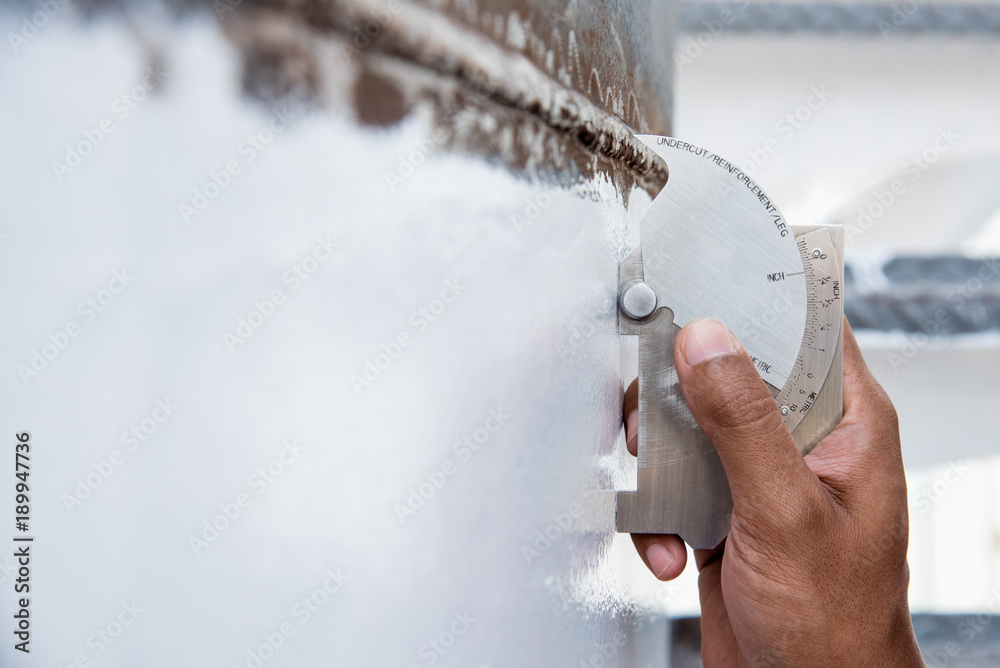Comprehensive Overview to Effective Storage Tank Welding Evaluation Techniques and Best Practices for Top Quality Assurance
In the realm of storage tank welding, rigorous examination techniques are critical for securing architectural integrity and making certain compliance with sector guidelines. As we check out these crucial elements, it becomes clear that a positive inspection strategy is not just valuable, but important for operational success in settings dealing with hazardous materials.
Relevance of Storage Tank Welding Assessment

Tank welding assessment functions as a preventative step, identifying possible defects such as fractures, porosity, or incorrect joint infiltration before they escalate right into significant issues. Routine assessments not just abide by market policies and requirements however likewise boost the longevity of the storage tanks, decreasing the need for pricey repair services or replacements.

Visual Assessment Methods
Using systematic aesthetic assessment strategies is crucial for analyzing the quality and stability of welded joints in storage tanks. This method works as the first line of defense in identifying prospective flaws such as fractures, undercuts, and inadequate penetration. The inspector should come close to the job with an eager eye, making use of appropriate devices like multiplying glasses, flashlights, and mirrors to improve exposure.
During the evaluation process, the assessor must review the weld account, guaranteeing it complies with specified requirements and guidelines (Tank Welding Inspection). This consists of taking a look at the grain width, height, and fusion with the base material. Inspectors should also pay attention to the bordering locations for indicators of thermal distortion or contamination that may affect the weld's performance
Documents of searchings for is vital; inspectors need to record any kind of abnormalities, categorizing them by severity for additional evaluation. This organized approach not just help in immediate defect identification but additionally adds to lasting quality control by making certain compliance with market standards. Normal training and calibration of visual examination methods further enhance the dependability of assessments, eventually leading to much safer and more resilient tank frameworks.
Non-Destructive Testing Approaches
Non-destructive testing (NDT) approaches are frequently utilized in tank welding assessments to examine the honesty of welded joints without endangering their architectural honesty. These strategies are important for identifying problems such as splits, spaces, and inclusions that could cause tragic failures if left unnoticed.
Common NDT techniques consist of ultrasonic testing (UT), which uses high-frequency sound waves to discover internal defects; radiographic screening (RT), using X-rays or gamma rays to visualize weld structures; and magnetic particle screening (MT), which discloses surface area and near-surface gaps in ferromagnetic products (Tank Welding Inspection). Fluid penetrant screening (PT) is also widely utilized, qualified of detecting surface-breaking problems by applying a fluorescent or color contrast color
Each NDT approach has its details applications and advantages, making it vital for examiners to choose the ideal strategy based upon the product and the kind of weld being evaluated. The integration of these NDT methods into the evaluation process improves the general quality control framework, making sure that bonded containers meet security and efficiency standards. Eventually, NDT plays an essential role in maintaining the stability and durability of storage tank structures in different industrial applications.

Paperwork and Reporting
Guaranteeing extensive paperwork and coverage during tank welding evaluations is critical for keeping conformity with sector requirements and promoting reliable interaction amongst stakeholders. Appropriate documents acts as a detailed record of evaluation activities, findings, and any kind of rehabilitative actions taken throughout the welding procedure. This information is important not just for quality control yet additionally for audits and regulative reviews.

A well-structured inspection record must include details such as the date of examination, names of examiners, welding treatments used, materials used, and any type of discrepancies from established standards. Additionally, pictures and representations can enhance the clarity of get more the report, giving aesthetic context to the findings. It is also vital to document any non-conformities together with their resolution, guaranteeing that all stakeholders are informed of potential threats and the steps required to alleviate them.
Moreover, maintaining a central database for all assessment records allows for very easy retrieval and review, cultivating a culture of transparency and responsibility. By prioritizing thorough paperwork and coverage, organizations can not only copyright quality control yet additionally enhance their track record within the Discover More Here market, eventually bring about improved safety and operational efficiency.
Constant Renovation Practices
Continuous enhancement techniques are essential for improving the high quality and performance of container welding inspections. Executing a methodical strategy to evaluate and fine-tune assessment techniques fosters a culture of quality control within the organization. One efficient technique includes routine training and upskilling of examination workers to remain abreast of the most recent welding innovations and requirements. This makes sure examiners possess the required knowledge and skills to recognize flaws precisely.
Moreover, making use of data-driven evaluation enables companies to track inspection results, recognize trends, and determine locations for improvement. Employing tools such as origin analysis can aid in understanding the underlying issues resulting in problems, allowing targeted interventions. Furthermore, obtaining comments from evaluation teams and stakeholders develops a collaborative atmosphere that encourages innovative options.
Incorporating advanced modern this post technologies, such as computerized examination systems and real-time surveillance, can substantially improve the accuracy and rate of inspections. Regular audits of the evaluation processes likewise add to a society of responsibility and continuous improvement. Eventually, these continuous improvement techniques not only raise the high quality of storage tank welding inspections yet likewise contribute to total functional excellence and client satisfaction.
Verdict
In verdict, reliable storage tank welding inspection is critical for making sure the architectural honesty and safety of storage systems, specifically those taking care of harmful materials. Utilizing a combination of visual examination methods and non-destructive screening methods promotes the early identification of flaws, thereby maintaining conformity with sector criteria.
Comments on “Why Routine Tank Welding Inspection is Vital for Architectural Stability”